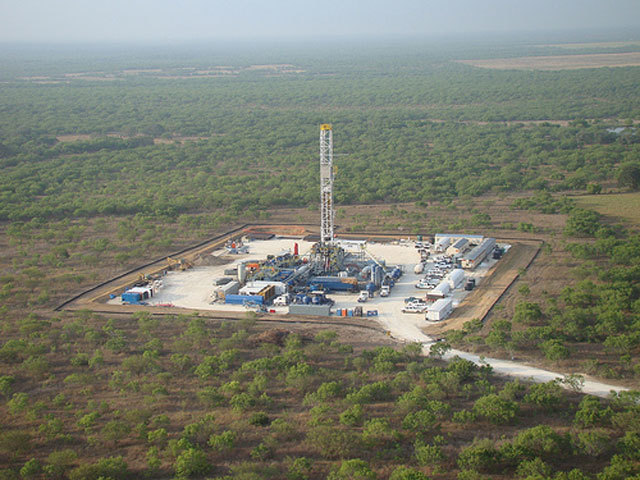
From her little vantage point in Cuero, Texas, of the U.S. shale oil boom, Jill Potts doesn’t see anything to worry about.
Yeah, she’s heard about how much oil prices have plunged and she knows that investors in New York are concerned the declines could make some U.S. fields unprofitable.
Staring out the window of her oil equipment shop, though, Potts sees nothing but a long line of tanker trucks rumbling through the heart of the Eagle Ford shale field. Seven are lined up at a red light right in front of her. When the light turns red again, three more come to a stop. Nine at the next.
“You look at this corner and you wouldn’t be disillusioned with the oil field,” said Potts, who opened Summit Oilfield Supply in Cuero this year after running a similar business near Dallas for a decade. “I sometimes see 15 trucks waiting at the red light, and every one of them is headed to the oil field.”
U.S. benchmark West Texas Intermediate oil has dropped 23 percent from its June high to $83.14 a barrel today, driven lower by a supply glut created in part by a surge in drilling that’s pushed the country’s output to a 29-year high. At the same time, demand is weakening across the globe, prompting the International Energy Agency last week to cut its outlook for consumption growth in 2014 and 2015.
Shale wells, like those in the Eagle Ford, deplete as much as 50 percent in their first year, faster than conventional ones, putting pressure on companies to find new wells. Even if drilling remains profitable, lower prices will erode some companies’ ability to raise money and make it tougher to repay debt and fund new outlays, said Shane Fildes, the Calgary-based head of global energy at BMO Capital Markets.
“You may be economic but if you can’t get the money to drill, you won’t be drilling,” Fildes said.
A decline in prices below $80 a barrel would trigger a slowdown in drilling in the U.S., Ralph Eads, vice chairman and global head of energy investment banking at Jefferies LLC, estimated earlier this month. Oil from shale formations costs $50 to $100 a barrel to produce, compared with $10 to $25 a barrel for conventional supplies from the Middle East and North Africa, according to the Paris-based IEA.
So far none of this has meant much to folks in Cuero, a town of less than 10,000 in South Texas about halfway between San Antonio and the Gulf of Mexico.
At the Best Western on top of the hill by the high school, rooms were going fast on a recent weekday. Seventy-five of the hotel’s 79 rooms had been booked for the night before lunchtime. Across town, workers pushed ahead with the construction of two new hotels, a testament to just how difficult beds are to come by.
“We’re always full, just about every night,” said Martha Velasquez, the general manager at the Best Western.
The town of Cuero began growing around the turn of the 20th century, when a railroad line was put down, and its population peaked in 1950, according to the Texas Almanac.
While the town lost residents in the second half of the century, the infrastructure was in place for it to become a hub for oil workers when Petrohawk Energy Corp. drilled the first Eagle Ford well in 2008.
Oil production from the Eagle Ford region has jumped 27- fold in the six years since the Petrohawk well, thanks to techniques such as horizontal drilling and hydraulic fracturing that freed up oil and gas from underground shale rock. It’s projected to reach 1.61 million barrels a day in November, making it the largest field in the U.S. after the Permian Basin, a patch that lies several hundred miles to the northwest.
J.D. Jones, a downhole pump specialist for Knox Oil Field Supply Inc., has seen oil’s boom-and-bust cycle first-hand. In the mid-1980s, he watched his father’s independent drilling business sink into bankruptcy after oil prices plunged 60 percent in just four months.
The situation isn’t nearly as dire now, said Jones, who had traveled about 300 miles to Cuero from the company’s headquarters in San Angelo, Texas, to expand operations by installing a machine to build sucker rod pumps for wells. Oil had dropped to as low as $10 a barrel back in 1986.
“$80 a barrel still looks pretty good,” he said.
Potts, the shop owner, said she used to track commodity prices daily and would “freak out” when crude dropped.
She’s become more even-keeled over the years.
“If you worry about oil prices, you’re in the wrong business,” Potts said. “They’ll bounce back.”
Recommended for you
